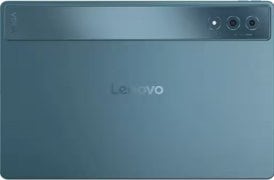- Home
- Mobiles
- Mobiles Reviews
- Motorola Edge 60 Pro Review: Quite the Performer
Motorola Edge 60 Pro Review: Quite the Performer
Motorola's Edge 60 Pro would have been the perfect mid-ranger.

The Motorola Edge 60 Pro is priced from Rs. 29,999 in India
Of late, we have been flooded with choices in the mid-range. Manufacturers have taken things up a notch this year by releasing mid-range smartphones that pack premium features like quad-curved displays, IP69 ratings for dust and water resistance, and massive batteries with wireless charging capabilities. Indeed, manufacturers aren't holding back, and this often translates to excellent value, coaxing a buyer who would normally shell out Rs. 25,000 to spend a bit more and purchase a device that's priced around Rs. 30,000.
Motorola seems to be following the same strategy; this year, it has added several upgrades to its stylish mid-ranger, the Edge 60 Pro. There's a new "quad-curved" display, a better IP rating, a big battery upgrade and some fancy new finishes to choose from. But after using the phone for several weeks, I can conclude that there are a few chinks in the Edge 60 Pro's armour.
Motorola Edge 60 Pro Design
The Motorola Edge 60 Pro feels and appears very different from its predecessor, even though its overall dimensions and weight (186g) remain the same as the Edge 50 Pro it replaces. The brand accomplishes this by retaining the older model's overall dimensions, tapering all sides and corners, and giving it a rounded appearance.
![]()
Motorola has not only used a quad-curved rear plastic panel, but a quad-curved screen on the front as well
Indeed, it's all an impressive feat mainly because there's now a much bigger 6,000mAh battery in there compared to the 4,500mAh battery in the previous model. It hasn't gained any additional weight because the brand has swapped the aluminium frame of the Edge 50 Pro with a polycarbonate chassis for the new Edge 60 Pro.
The eco leather (silicone-based) material feels premium and special, while also providing plenty of grip. However, its durability seemed a bit sketchy. Since we have had our review unit for months, I have noticed some lightly faded areas near the camera module.
![]()
I absolutely dig the batwing iridescent Motorola logo placement embedded into the fabric-like rear panel
Although it may appear premium and delicate, the Motorola Edge 60 Pro boasts IP68 and IP69 Ratings for dust and water resistance, marking an improvement over its previous IP68 rating. Motorola also claims the phone is MIL-STD-810H certified. As always, you need to keep in mind that manufacturers will not cover damage caused by water ingress, so it's best to only test out these ratings when the situation is unavoidable.
Motorola Edge 60 Pro Performance
The MediaTek Dimensity 8350 Extreme is a 4nm processor with a rather ambitious clock speed of 3.35GHz. Unlike the Nothing Phone 3a Pro and the previous Edge 50 Pro, which used slower UFS 2.2 storage, the Edge 60 Pro comes with a much faster (and future-proof) UFS 4.0 storage. With 256GB of base storage, there's no storage expansion either, but you do get room for two Nano SIM cards.
![]()
I have noticed some lightly faded areas near the camera module
Given the powerful underlying hardware compared to the humble chipset that powered the Edge 50 Pro, I expected no trouble in the performance department, especially when it came to software. And Motorola, with its Android 15-based Hello UI experience, does deliver. There's plenty of customisation available, along with a ton of AI tools, which I explored in my Motorola Razr 60 Ultra review. Despite the Edge 60 Pro being the launch platform for Motorola's AI ambitions, the Moto AI is still as clunky and slow as it was before, making Google's Gemini the ideal choice for AI-based interactions and tasks.
![]()
Motorola also offers 3 years of OS and 4 years of SMR updates, which is average for a mid-range smartphone, but good to have
| Benchmarks | Motorola Edge 60 Pro | Nothing Phone 3a Pro |
|---|---|---|
| Display resolution | 1.5K | FHD+ |
| Chipset | Mediatek Dimensity 8350 Extreme (4 nm) | Snapdragon 7s Gen 3 (4nm) |
| AnTuTu v10 | 14,13,220 | 8,01,123 |
| PCMark Work 3.0 | 19,111 | 13,554 |
| Geekbench 6 Single | 1,368 | 1,173 |
| Geekbench 6 Multi | 4,466 | 3,239 |
| GFXB T-rex | 120 | 60 |
| GFXB Manhattan 3.1 | 115 | 55 |
| GFXB Car Chase | 70 | 28 |
| 3DM Slingshot Extreme OpenGL | Maxed Out | 5,528 |
| 3DM Slingshot | Maxed Out | 6,854 |
| 3DM Wild Life | Maxed Out | 3,988 |
| 3DM Wild Life Unlimited | 11,148 | 4,175 |
Our review unit was equipped with 12GB of LPDDR5X RAM. While the software experience was smooth and lag-free, it also delivered decent performance when it came to gaming. I tried out Call of Duty: Mobile, and the game ran smoothly at the default Very High graphics and Max framerate. Switching gears to Medium and Ultra, and after 3 tournaments, I could tell the phone started struggling a bi,t even though the rear panel did not feel very hot.
![]()
PCMark's Stress tests were an eye-opener, showing concerning performance drops under sustained (gaming) load. So you may notice some performance frame drops when playing demanding titles like Genshin Impact
The phone did heat up when using the camera app, but I could not feel most of the heat because of the well-insulated plastic frame and rear panel. I could still feel the heat through the display glass, but it didn't feel too hot or concerning, and it didn't slow down the camera interface.
Coming to the display, it's a quality 1,220 x 2,712 pixels, 6.7-inch, pOLED, but it isn't exactly a quad-curved panel as only the edges on the left and right bend and curve into the sides. The protective Gorilla Class 7i screen curves on all four sides. As for the underlying panel, it does a fine job of tackling the bright outdoors and is also HDR10+ certified, but Netflix and OTT apps did not show support for the same. Somehow, I could play HDR videos on YouTube, and it appeared bright and vibrant with deep blacks.
![]()
The stereo speaker setup now supports Dolby Atmos and sounds quite immersive
Motorola claims that the Edge 60 Pro has both a Pantone-validated camera system and display. That said, the camera setup sees both downgrades and upgrades. The 50-megapixel primary camera (LYTIA 700C) now gets a f/1.8 aperture versus the brighter f/1.4 aperture on the previous model. The 10-megapixel 3x telephoto camera remains the same as before, while the ultra-wide-angle camera has been upgraded to a new 50-megapixel sensor. Meanwhile, Motorola has also retained the 50-megapixel primary camera from the Edge 50 Pro, but this one lacks autofocus.
![]()
Also, no longer present is the laser-assisted focusing system from its predecessor
The primary camera captures quality images with good dynamic range and resolved detail in daylight. The photos are colour accurate most of the time (even in low light), but there are random instances where I noticed abnormal colour saturation. All-in-all, there's very little to complain about. (Tap images to expand)
Thanks to the upgraded sensor, the ultrawide camera also shoots impressive photos with good detail and dynamic range. These results are far better compared to the Edge 50 Pro, so it's a worthy upgrade. Performance in low light is decent with the noise levels under control. (Tap images to expand)
The telephoto camera managed some impressive photos in daylight, capturing natural colours and impressive detail for a mid-range smartphone. The only problem is that the small sensor feeds on light, and so, low-light performance isn't the best (textures are soft and muddy) unless there's plenty of ambient light around. (Tap images to expand)
The selfie camera does a good job in daylight, but tends to oversharpen images artificially (possibly because it lacks autofocus). The same oversharpening algorithm of the Portrait mode makes the finer details appear like brush stroke paintings. (Tap image to expand)
Videos are packed with good detail in daylight, but I found the dynamic range to be a bit lacking. The phone cannot capture 4K 60 fps video even though it is available as an option in the menu. Also, no matter which video shooting resolution I choose, the background always tends to overexpose, especially when shooting in sunny environments. Focusing speed is good as well, but in low light, there's a lot of focus hopping. This, along with the noisy and grainy footage and the unstable autofocus, means that the video recordings aren't worth it in low light.
Packing a larger-than-usual 6,000mAh battery, a welcome upgrade over the Edge 50 Pro's 4,500mAh capacity. Sadly, the results from our benchmark testing did not reflect the same. PCMark's Work Battery life test, which runs several everyday activities in a loop, managed a rather disappointing 9 hours and 30 minutes. Our HD video loop test also fared similarly, lasting only 12 hours and 32 minutes, which is relatively poor. For comparison, the Nothing Phone 3a Pro with its smaller 5,000mAh battery lasted 18 hours and 10 minutes in PCMark and 29 hours and 15 minutes in our video loop test.
![]()
Motorola's Hello UI comes with plenty of third-party apps, some of which can be uninstalled
Charging rates have dropped from 125W to 90W this year. The phone managed a full charge from a dead battery in just 53 minutes. Meanwhile, Motorola still retains its 15W wireless charging.
Fortunately, real-world daily usage was quite the opposite. This included a day of continuous use (mostly connected to 5G), which included social media scrolling, emails, calls, gaming and messaging. In 9 hours, I managed to bring the battery down to 75%, indicating it can easily last over a day of heavy usage and a day and a half of casual usage.
Motorola Edge 60 Pro Verdict
Motorola has managed to deliver better-performing smartphones, but it has cut a few corners to get there. Key among these include a slower charging (compared to its predecessor), lacklustre video recording, and shaky GPU performance. If you can ignore the above, then the Edge 60 Pro can be the perfect mid-ranger for you under Rs. 30,000.
There's also the Nothing Phone 3a Pro (Rs. 29,999 onwards), which offers a unique-looking design, an equally capable set of cameras and a fun software experience with Nothing OS. Although it may not be as future-proof (UFS 2.2 storage) or performance-oriented (for gaming), and its design is highly subjective, it remains a good option for those who are bored with the “typical smartphone” and want to hold something that looks and feels different. For those looking for better performance, the iQOO Neo 10 (Rs. 31,999 onwards) with its Snapdragon 8s Gen 4 SoC and gigantic 7,000mAh battery may be the perfect fit.
Get your daily dose of tech news, reviews, and insights, in under 80 characters on Gadgets 360 Turbo. Connect with fellow tech lovers on our Forum. Follow us on X, Facebook, WhatsApp, Threads and Google News for instant updates. Catch all the action on our YouTube channel.
Related Stories
- Samsung Galaxy Unpacked 2025
- ChatGPT
- Redmi Note 14 Pro+
- iPhone 16
- Apple Vision Pro
- Oneplus 12
- OnePlus Nord CE 3 Lite 5G
- iPhone 13
- Xiaomi 14 Pro
- Oppo Find N3
- Tecno Spark Go (2023)
- Realme V30
- Best Phones Under 25000
- Samsung Galaxy S24 Series
- Cryptocurrency
- iQoo 12
- Samsung Galaxy S24 Ultra
- Giottus
- Samsung Galaxy Z Flip 5
- Apple 'Scary Fast'
- Housefull 5
- GoPro Hero 12 Black Review
- Invincible Season 2
- JioGlass
- HD Ready TV
- Laptop Under 50000
- Smartwatch Under 10000
- Latest Mobile Phones
- Compare Phones
- Redmi Note 15 5G
- Redmi Note 15 Pro 5G
- Redmi Note 15 Pro+ 5G
- Lava Play Max
- Poco C85 5G
- Honor Magic 8 Lite
- Jolla Phone
- Realme P4x 5G
- Asus ProArt P16
- MacBook Pro 14-inch (M5, 2025)
- OnePlus Pad Go 2
- Poco Pad M1
- Just Corseca Skywatch Pro
- Honor Watch X5
- Acerpure Nitro Z Series 100-inch QLED TV
- Samsung 43 Inch LED Ultra HD (4K) Smart TV (UA43UE81AFULXL)
- Asus ROG Ally
- Nintendo Switch Lite
- Haier 1.6 Ton 5 Star Inverter Split AC (HSU19G-MZAID5BN-INV)
- Haier 1.6 Ton 5 Star Inverter Split AC (HSU19G-MZAIM5BN-INV)


















